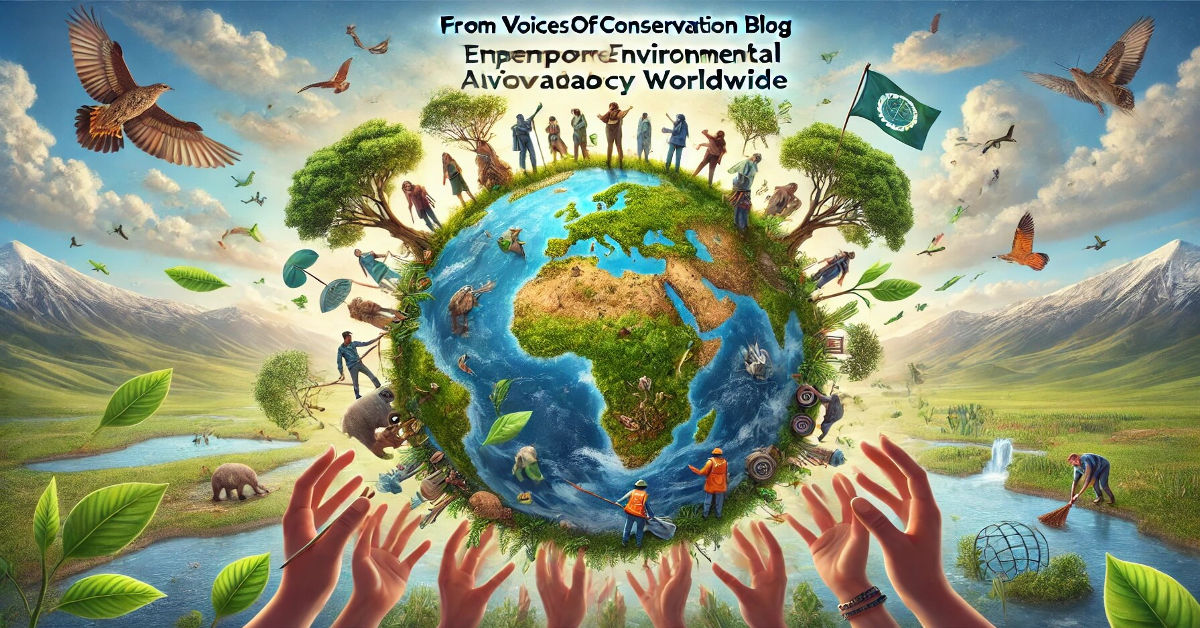Introduction
The need for conservation has never been higher at the cusp of climate change, decrease in habitat availability, and loss of species. from voicesofconservation.org blog is our focused gateway to powerful ideas and tools designed to draw out a changed society. This blog post will expand on three major aspects abused throughout the Voices of Conservation – stories of success, stories of struggle, as well as how technology and grassroots movements are changing the paradigm of environmentalism.
Hence the art of storytelling in conservation.
Of all the change tools mentioned by from voicesofconservation.org blog, it emerged that the use of stories was an effective tool in promoting change. Stories capture the attention and emotions of human individuals, which is why the conservation of wildlife has been marketed this way.
To survive its perhaps this is the best time for personal accounts that motivate action.
This is the kind of stories posted on the platform include those of people and groups that have gone out of their way to protect their environments. For instance, a struggling toons community prematurely worked to rejuvenate their depleted accommodation lost from the coral reefs that the marine society formulated a plan that remarkably altered the environment. However, the blog does get the personal stories of individuals involved in environmental issues right, which makes the issues real.
Issue:
Hope is important, and where there is hope, people feel positive looking at aspects such as success stories. That is why return of species, which were on the verge of extinction, like the bald eagle, proves that concentrated efforts today can bring great reward tomorrow. There is a noteworthy way in which from voicesofconservation.org blog succeeds at maintaining this tone of presenting calamities with possibilities and concrete successes while concurrently motivating the audience to participate.
Community-Driven Initiatives:
Environmental degradation takes its toll on communities, yet communities also have the power to become the change on the ground. Voices of Conservation gives firm grounds to the idea that a grassroots movement is a centerpiece of ecosystem restoration.
Case Study:
One compelling instance highlighted in the blog details the process by which a community forest regained its lost areas even as the surrounding region experienced deforestation. With rampant environmental degradation, the villagers joined hands to promote sustainable land management and forest rehabilitation. The partnership helped to repopulate the local wildlife, as well as bond, and stimulate local economic opportunities.
Empowering Local Leaders
Indeed, the blog highlights that creating local ownership by building the capacity of local leaders and stakeholders is crucial. Due on-the-ground work in real-world conservation challenges, conservations projects can be more impactful and enduring when these impacted are incorporated through decision-making processes. These grassroots efforts have ensured the protection of wetlands, preservation of community-managed wildlife preserves, and enabled the advocacy of conservation policies.
How education plays a role in conservation
Educating the public is one of the pillars of the from voicesofconservation.org blog mission. The best way to raise the future generation of environmental stewards, of people who truly have a deep understanding of the issues is by creating awareness around environmental education.
School and Youth Programs
The platform mentions several education initiatives like conservation syllabus in schools and nature camps for children. Experiencing nature directly through programs for youths is especially impactful for developing a lasting passion for caring for our world.
Virtual Resources and Tutorials
The blog also includes a variety of digital resources and workshops that are designed to help educate adults on sustainability and conservation science if you are looking for something more public facing. They provide information on renewable energy, biodiversity, and waste reduction, enabling people to take action in their everyday lives.
Embracing Technology for a Sustainable Future
Revolutionising Conservation — Technology Advances from voicesofconservation.org blog investigates new advances in technology that help scientists study ecosystems, gather data, and optimize resource management.
Drones and Satellite Imaging
Drones satellite imaging have made conservation work easier. Offering high-resolution images of non-accessible terrains, it helps the researchers in monitoring deforestation, illegal wildlife hunting and habitat alteration. This technology enables conservationists to respond with increased speed and effectiveness to new threats.
Analytical Review:
AI helps us to analyze big data — like predicting where wildlife migration will be, and mapping out those hotspots for conservation. These insights allow for a more strategic and better allocation of resources. There is also a section discussing Machine Learning for climate and how it can assist governments and organizations in crafting better climate policies and practices.
Third Party Blockchain for Supply Chain Transparency
Blockchain technology is also being used in a creative manner for supply chain transparency and sustainability. This ensures more informed consumer purchasing in the knowledge that the product comes from an ethical and environmentally friendly source. Some examples of companies that have incorporated these practices and their larger conservation implications are outlined Voices of Conservation.
Conservation Challenges:
Nevertheless, conservationists have come across various challenges irrespective of the many developments. The most immediate challenges include climate change, habitat destruction and, of course, the never-ending struggle to get enough funding.
Climate Change is a Worldwide Problem
Voices of Conservation highlights that climate change has already affected every corner of our planet, from sea level rise that endangers coastal areas to temperature increase affecting wildlife. They go over things like carbon sequestration and climate adaptation as if these were the answers.
Habitat Loss and Urbanization
The loss of habitat still caused mainly by urban expansion and deforestation. This blog discusses creative approaches to address these challenges, including developing wildlife corridors and encouraging sustainable urban design. We must save what we still have as well as restore what we ruined.
Financing and distribution of resources
Finding money is a perennial conservation challenge. from voicesofconservation.org blog highlights innovative funding mechanisms, such as conservation bonds, eco-tourism schemes suggesting these have potential to provide a sustainable revenue stream for such projects. It also mentions public-private partnerships as an effective way to scale up conservation.
How Readers Can Help:
The blog features actionable ways in which readers can get active in more local conservation efforts.
Contribute to conservation groups.
Contributing to reputable conservation organizations or giving time and skills can be a tremendous help. The “Voices of Conservation” section includes a directory of organizations involved in the frontline of ecological conservation that readers can easily engage with.

Advocate for Policy Changes
Because real change will come when thousands will start to change course. From writing to legislatures to marching in the streets, the blog includes ways to get engaged in policy advocacy. Together, we have the power to shape environmental laws and regulations.
Adopt Sustainable Practices
Those tiny life adjustments we make, like decreasing plastic, making sure not to keep your lights forever, and buying eco-friendly goods, build up to one big positive transformation for our environment. Environmental Voices has a treasure trove of ideas and inspiration for those wanting to live more sustainably.
Conclusion:
Voices of Conservation is about informing, inspiring, and empowering. Through its articles, success stories, and practical strategies, it creates a community of environmental advocates who want to make a difference. From advocating for conservation, to learning and sharing knowledge, to using technology in making a change, there are lots of ways you can help in building a better sustainable tomorrow.
Join Voices of Conservation, be part of the movement and act now! We can make a positive change for the generations to come.
This is an overview post that collates key messages and themes from the from voicesofconservation.org blog platform and should inspire and inform readers and provide them information and options as to how they can engage. Tell me if you need parts of this elaborated on or adjusted!

